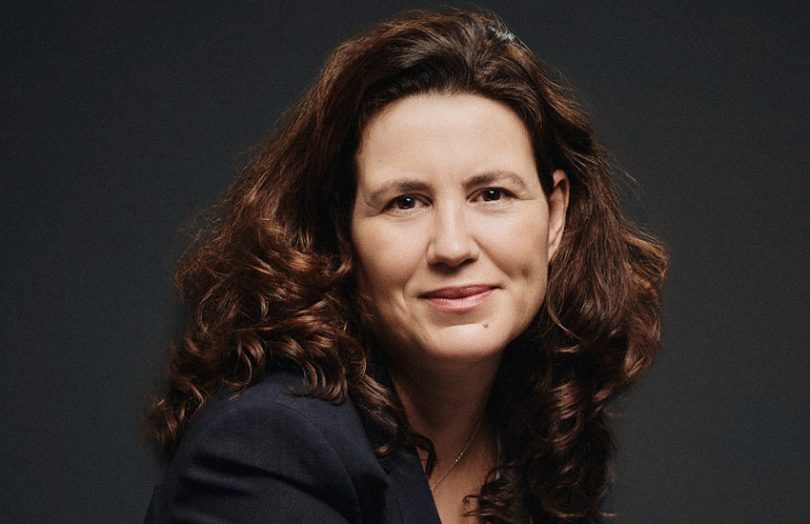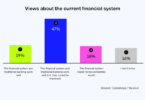Caisse des Dépôts et Consignations (CDC), the French government investment company, started exploring the blockchain space in 2015. Since then, Nadia Filali has led the organization’s Blockchain and Crypto-asset division. During that time, the CDC has been involved in some of the highest profile blockchain projects in France, which have informed Filali’s views on the tokenization of financial assets.
Nadia Filali will be speaking next week at the European Blockchain Convention on a panel entitled “The Tokenization of Financial Assets is Finally Here. Are you ready?” The convention will be streamed online from April 12 – 16 exploring the latest innovations, implementations, & strategies for using blockchain in business. Use the code LEDGER25 to get a 25% ticket discount.
On the one hand, Filali is a blockchain evangelist and sees the benefits of tokenizing digital assets in terms of pure efficiencies, never mind the potential for new business models. Nonetheless, there are hurdles. The issues include:
- A need to develop liquid markets
- The impact on incumbents
- Grey areas in legislation
- A lack of understanding at senior levels.
The need for liquidity
Filali highlighted the efficiency gains from security tokens because the end-to-end process is executed on a blockchain in real-time. This removes the counterparty risks from a typical two-day settlement and a significant chunk of intermediary costs. All the parties no longer need to spend time reconciling with each other.
The ability to tokenize and raise funding for SMEs is a big attraction. “We don’t have many people who are willing to take a risk to invest in some SMEs. If you explain that you can invest in SMEs but take only a small part of the risk, it could be interesting,” said Filali. She added that there is liquidity because the SME stockholder can transfer their token.
However, for now, that liquidity is theoretical. The CDC is an investor, is internally exploring the opportunity within its financial business, and by launching Liquidshare. “But they won’t adopt new technological infrastructures if there is no market,” said Filali.
She continued, “It is one of the problems of the development of the security token (sector) for the moment. We’ve seen some experimentation. We know it works. But the CIBs (commercial banks) will not change the way they work if there is no volume.” Ledger Insights recently wrote about an initiative that aims to create more volume for regulated security token platforms through interoperability.
But distribution and liquidity are not the only hurdles. The other is disruption.
The impact on intermediaries
In a future where blockchain is the single source of truth for securities ownership, there’s a big question mark over the need for some of the intermediaries. Beyond legal requirements, is there still a need for a central securities depository (CSD) for listed securities? The role of custodians evolves to a technical one, and securities services are transformed or automated.
“I think the message is that we should not act in reaction or fear,” said Nadia Filali. “It’s always difficult to change things because there’s an impact on the old industry. It’s not really neutral.”
She noted the importance of not blocking innovation. “If they see that it’s more efficient and could be better for the investor in the end, we will go that way. And there is a real opportunity to take the lead in innovation in Europe to develop an industry and standards consistent with our needs and values,” said Filali.
Legal challenges
France was ahead of the curve when it comes to blockchain regulation. Back in 2017, it changed its laws to allow blockchain to act as a securities registry, referred to as DEEP. However, technically this only applies to unlisted securities. The French regulator pointed out that current European regulation doesn’t allow full blockchain settlement for listed securities. “A platform listing security tokens would have to either go through an intermediary approved as a central depository or be itself approved as such,” it says.
On the one hand, Filali is optimistic about progress because of Europe’s proposed MiCa regulations and its sandbox approach with the DLT Pilot Regime. At the same time, she sees gaps between MiCa and MiFID and is concerned there is still scope for regulatory uncertainty.
The other challenge she sees is a lack of understanding with blockchain, crypto-assets and Bitcoin always being lumped together even though most applications are unlikely to use all three. Hence there’s still a need for the ongoing educational process she initiated back in 2015.
Given these views on tokenization, what’s CDC doing about them?
CDC’s blockchain activities
In the context of financial tokenization, CDC has four very pertinent projects. First, it’s a participant in a French project for an interbank settlement token to be used to settle security token transactions in real-time. Other participants include BNP Paribas CIB, Crédit Agricole CIB, security token platform Tokeny and French development house The Blockchain Xdev.
The CDC was also one of the founders of LiquidShare, the startup that’s working on post-trade settlement for the sale of listed and unlisted SME shares. Other investors include BNP Paribas, Société Générale, CACEIS Bank, AFS, Euronext and Euroclear.
Through its LiquidShare involvement, the CDC has a front row seat in the Banque de France’s wholesale central bank digital currency (CBDC) trials.
Plus, there’s an initiative to explore stablecoins and blockchain business models through a research chair with École Polytechnique I’X, together with Cap Gemini and Nomadics Labs, the French development center for public blockchain Tezos.
These are all examples of the CDC’s participation in consortia and creating these strategic partnerships is one of the CDC’s four priorities.
Another example is a new venture Archipels, a credentials and self-sovereign identity startup that includes energy firms EDF and Engie and the French Post, La Poste. Archipels creates blockchain hashes of more than 200,000 energy bills daily. This enables people to use their energy bills to prove their address, for example, for the KYC process when opening a bank account.
The CDC’s other blockchain priorities include Hexachain, which provides conceptualization, consulting and development services for is clients, the public sector and regions. It also participates in regulatory and industry working groups such as the EU Blockchain Observatory, INATBA as a founder and board member, the French National Task Force and it’s involved in business intelligence and monitoring.
For all its activities and Filali’s persuasiveness, so far, CDC is not significantly adopting the technology itself. CDC is heavily involved in green finance and renewable energy, and its finance department issues green bonds. Blockchain provides the ability to prove that the money from the bond is used for the claimed green or sustainable purposes. The CDC finance department conducted a green bond pilot with IRT System X, first on the issuance of a green bond and it’s now thinking about the traceability of investments.
Blockchain itself can present a challenge for green bonds. While some public blockchains that use Proof of Work are very energy hungry, others are far less so. And permissioned blockchains use significantly less energy. So when Filali first presented the green bond idea, the reaction was, “You want to try to use blockchain for green bonds? But blockchain is not sustainable.”






